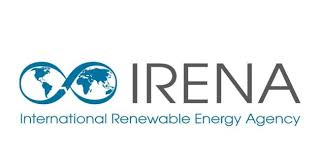
Islands from the Caribbean to the South China Sea are perhaps best known for their beautiful beaches, azure waters and rich sea life, but they are rich in something else as well: renewable energy. In most small island developing states (SIDS), a combination of renewable energy sources can meet the majority of domestic energy needs while decreasing electricity costs, increasing energy access, creating jobs and mitigating climate change.
What’s more, dramatically falling costs for renewable energy technology have made the switch to renewables more possible than ever before, resulting in many early success stories. In Cabo Verde for example, a wind project connected 50,000 citizens to the national electricity grid for the first time. In the Dominican Republic, 23 micro-hydropower plants are providing sustainable energy to more than 3,000 families across the country. St. Vincent and the Grenadines has also embarked on a large geothermal project, which could supply 75% of the islands electricity needs.
While it’s clear that strong renewable energy potential exists on islands, the pace of development is too slow.
Enabling the transition
Today, the US Department of Energy and the US State Department announced a new initiative to help boost renewables on islands. The Energy Transition Initiative Pacific Program will help Pacific islands move away from costly imported fuels and towards domestically produced renewables. Building on US assistance to Caribbean nations under the Caribbean Energy Security Initiative, and on the successful Energy Transition Initiative focused on Hawaii and the U.S. Virgin Islands, this new effort will bring renewable energy expertise and technical assistance to the Pacific islands.
To kick things off, the US Department of State, the US Department of Energy, IRENA and the Pacific Community will host a workshop to provide regional governments with concrete strategies to implement an Energy Transition Initiative model in their countries. The workshop will help identify specific areas for technical assistance and/or advisory support, while also facilitating access to the Green Climate Fund and other sources of finance for clean energy projects.
IRENA’s island work
This workshop will directly support IRENA’s ongoing island work, conducted under the SIDS Lighthouses Initiative. The initiative supports SIDS partners in achieving their renewable energy targets by providing access to a suite of planning, policy and finance tools and services, as well as an information sharing network. So far, 34 SIDS partners from the Caribbean, Pacific, Africa, Indian Ocean, Mediterranean and South China Sea and 19 development partners have joined the initiative.
Together, they pledge to achieve more than 120MW of new renewable energy deployment by 2020. Furthermore, all participating SIDS are committed to develop renewable energy roadmaps and the Initiative will facilitate engagement with stakeholders to mobilize USD 500 million in financing to support the implementation of these roadmaps.
Significant progress has been made to date under the initiative in the Pacific. IRENA recently completed grid studies for Samoa and the Cook Islands, including step-by-step guidance on planning, expansion and operation measures needed to host the target shares of variable renewable energy. According to the Samoa grid integration study, the island can meet up to 93% of its electricity demand through a combination of hydro, solar and wind power.
IRENA has also completed more than 25 Renewable Readiness Assessments (RRAs), which are a country-initiated, country-led process identifying actions needed to enable the rapid deployment of renewables. RRAs bring together key actors in the renewable energy space to discuss common challenges and to jointly devise actions to tackle them with resources from the international community. To date, Fiji, Kiribati, the Marshall Islands and Vanuatu have all completed the RRA process with IRENA.
In addition, IRENA island energy transition plans, known as roadmaps, to assist governments to create actionable plans to reach their renewable energy targets, are also in progress. To date, Nauru, Palau, Kiribati and Micronesia, have either completed or are in the process of completing these roadmaps.
The path forward
For SIDS, implementing renewables is not just about saving the environment, it is about saving their communities, families, and homes for future generations. Many island nations have taken the first, second, or even third step towards the large-scale use of domestic renewable energy. With renewable energy sources now cost-competitive with oil-generated electricity, islands have an unprecedented opportunity to rethink their energy strategy, develop policies and strengthen the institutions that would promote the deployment of renewable energy, and by doing so create jobs, bring power to those currently without and deliver more reliable electricity services, all while combating climate change and preserving their way of life.
The SIDS Lighthouses and the Energy Transition Initiatives, are the next steps to help islands realize their full renewable potential.
Source: irenanewsroom.org

